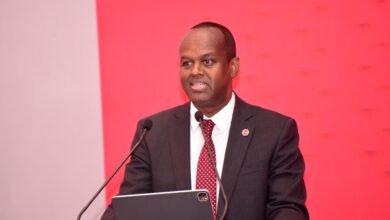
Kenya’s urbanization rate stood at an average of 3.7% as of 2021, higher than the global average of 1.6%. Similarly, the annual population growth rate averaged 1.9% as of 2021, which is also higher than the global average of 0.9%, according to the World Bank.
As a result, the demand for housing in Kenya is very high, far exceeding the available supply, with Centre for Affordable Housing Finance Africa (CAHF) estimating that there is an 80.0% annual housing deficit in Kenya.
This is evidenced by the fact that only 50,000 new houses are delivered annually in the country, whereas the demand is estimated to be at about 250,000 units per year. This leaves a shortfall of about 200,000 houses per year, which is a significant gap to fill.
As such, the government has since initiated various programs, policies and strategies to ensure provision of adequate housing for all citizens. Some of the housing initiatives include the following:
Kenya Slum Upgrading Programme (KENSUP), aimed at improving the living conditions of residents in informal settlements in Kenya. This is done through construction of low cost houses, installation of social and physical infrastructure, introducing income generation activities, facilitating security of tenants, environment and solid waste management through community and resource mobilization,
Affordable Housing Programme (AHP), which was envisioned in the Big Four Agenda, a government initiative aimed at accelerating the country’s economic development. The AHP is designed to address the housing deficit in Kenya, by mobilizing both public and private resources to construct affordable housing units. The AHP aims to achieve this goal through several strategies, including;
a. Incentives to Developers: These include; i) availing land to county governments for construction of affordable housing units, ii) exemption from Value Added Tax (VAT) on importation and local purchase of goods for construction of houses under the affordable housing programme, iii) low corporate tax rate of 15.0% for developers of over 100 units, iv) exemption from 4.0% (urban areas) and 2.0% (rural areas) stamp duty for first time buyers of houses under the affordable housing progamme, and, vi) tax relief of 15.0% of savings to drive contributions towards home ownership. These are expected to accelerate the state’s agenda of providing affordable housing to Kenyans,
b. The Kenya Mortgage Refinancing Company (KMRC): which was established in 2018 and began lending in 2020 with the aim of providing long-term financing to primary mortgage lenders such as banks, microfinance institutions, and SACCOs at low and fixed interest rates. The KMRC seeks to increase access to affordable housing finance by providing lenders with the liquidity they need to offer affordable mortgages to Kenyans. In 2022, KMRC refinanced 1,948 mortgage loans valued at Ksh.6.8 billion, representing a 278.0% increase from 574 home loans valued at Ksh.1.3 billion disbursed in 2021, and,
c. The National Housing Development Fund (NHDF): which was first established in 2018 through the Finance Act, and managed by the National Housing Corporation (NHC), with an objective of raising funds from various sources in an initiative aimed at providing affordable housing to Kenyans. The fund would de-risk private developers by guaranteeing offtake for units, enable buyer uptake by providing affordable finance solutions, and allow mortgage and cash buyers to save towards the purchase of affordable homes through the Home Ownership Savings Plan (HOSP).
Source; Cytonn





